Braces have long been a rite of passage for many teenagers, and many adults have been embracing the benefits that come with orthodontics. But let’s face it — braces are ugly and uncomfortable. And that’s where Invisalign comes in.
How Does Invisalign Work?
The idea is simple. Clear aligners, such as Invisalign, are custom-made mouthpieces that slip over your teeth. Over time, each aligner will move your teeth a little closer to the treatment goal. In other words, you will wear a series of different aligners, changing them out every few weeks.
The mouthpieces must be removed for eating, brushing, and flossing. As a result, they tend to discourage snacking and other unhealthy habits. Most treatment programs last between 10 and 24 months.
What Are the Advantages Over Traditional Braces?
There are two main advantages of Invisalign over traditional braces:
- They’re nearly invisible. Gone are the days of being a metal mouth! For teenagers in particular, this can be very helpful, as the correction of their smile will be subtle, allowing them to confidently go to school, work, and other events. For adults, clear braces can make a huge difference for those in public-facing professions.
- They make it easy to practice good oral hygiene. Food particles often get stuck under the wires of braces, causing issues. Since clear braces have to be taken out when eating, it’s easy to keep your mouth clean and healthy.
Another advantage for some is that Invisalign aligners can be removed when playing full-contact sports, such as boxing or football, reducing the risk of damage to the teeth that can occur when playing sports with braces.
When Are Traditional Braces Better?
Invisalign is a great solution for many patients, but it’s not recommended for certain situations. Primarily, Invisalign is not recommended for younger children.
This is partly because their jaws are still growing, and it’s not possible to make the tight-fitting aligners far in advance. Younger children who start treatment are also more likely to have problems Invisalign struggles to fix. It’s also because children are more likely to lose their aligners, break them, or forget to wear them. Invisalign aligners should be worn for at least 22 hours a day for best results, and it’s not easy to get children to follow such restrictions.
There are a few other reasons why an orthodontist might recommend traditional braces over clear braces. They include:
- Situations where aligners have not given quite the desired result. Invisalign can sometimes be a little bit less precise, and some patients may find a few weeks or months of braces at the end of the treatment helpful.
- When the patient is being uncooperative, is not motivated (particularly with younger teenagers), or is finding compliance hard. There’s a high risk of severe cavities if patients do not remove their aligners before eating.
- Tipped or rotated teeth, particularly premolars or lower canines, require a little more work than Invisalign can do. In this case, traditional braces will have to be used, but you may be able to switch to Invisalign later in treatment.
- Patients with periodontal problems. Periodontal disease (an infection of the tissues that hold your teeth in place) must be fixed before beginning treatment.
- Patients who have had teeth extracted to avoid overcrowding may also need an initial treatment with braces to avoid the teeth from tipping. Teeth are sometimes unpredictable, and for the best oral health, it’s important to approach them as needed.
Learn More Today!
For the majority of adults and young adults with crooked teeth, Invisalign is a great solution that is often more comfortable and far more aesthetically pleasing than traditional braces. Ultimately, your orthodontic specialist will recommend the best course of treatment. To learn more, give us a call at 904-295-1364 or schedule a free consultation today. We proudly provide orthodontic services for children and adults in St. Augustine, St. Johns, and the surrounding FL communities.
